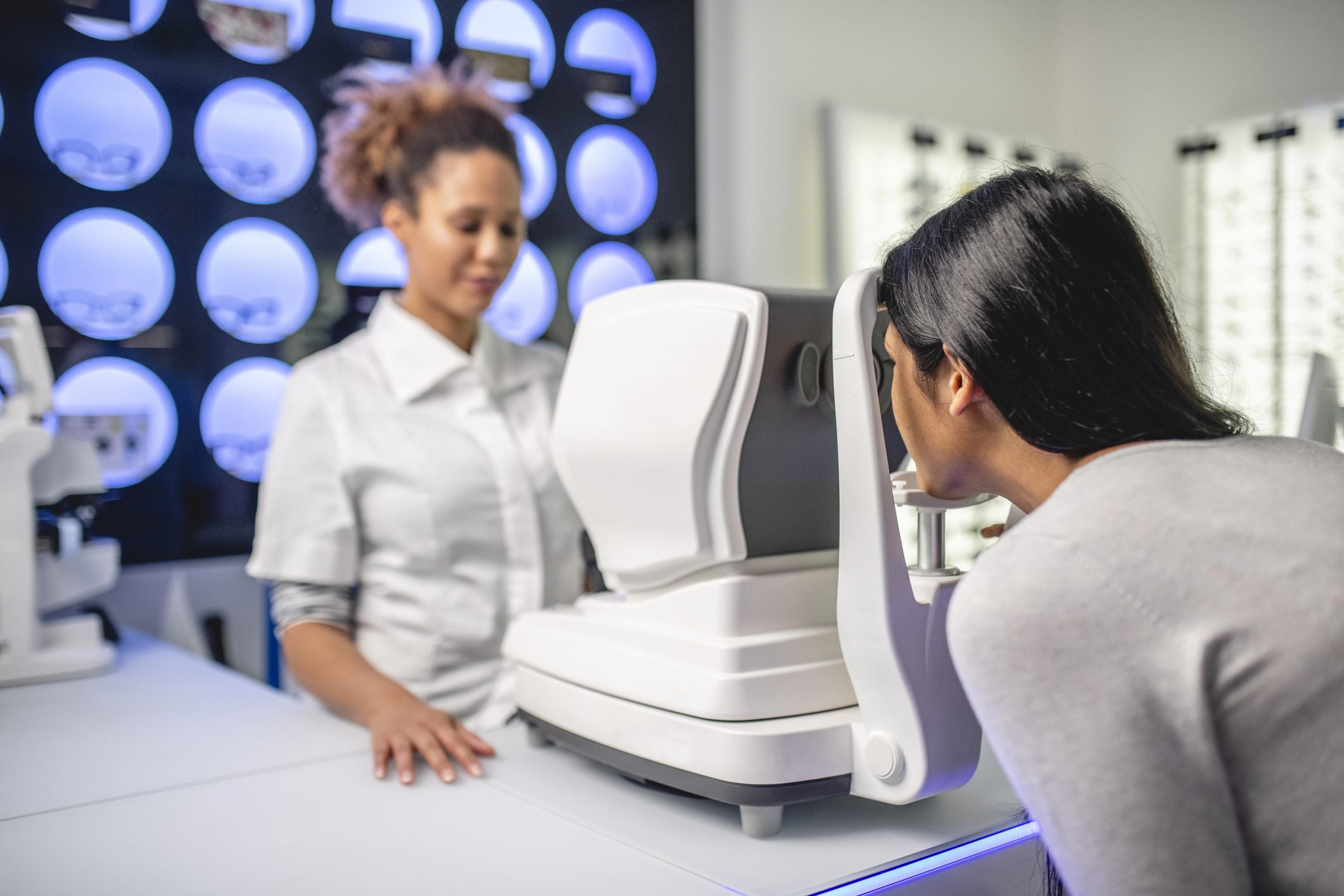Vision Changes After Age 40

Dr. Gina Lynem-Walker
| 3 min read
Dr. Gina Lynem-Walker, MD, is a quality medical dire...

Aging can begin earlier than expected – and often, one of the first changes individuals may notice is with their eyes. Adults over the age of 40 are at the greatest risk for eye diseases; and 40 is often the age that adults begin to experience new issues with their vision.
The annual economic impact of individuals over the age of 40 with major vision problems in the U.S. is more than $145 billion.
Changing vision
Aging causes several changes to the eye, which occur slowly over time, but eventually advance to the point that they are noticeable. The tear glands in the eye will produce fewer tears, leaving the eye feeling dry and irritated. The lens, which is normally clear, can start to discolor or become less flexible. This can cause the following vision issues:
- Harder to tell the difference between certain color shades
- Needing more light for up-close tasks like reading
- More difficultly focusing on near objects
- Difficulty with glare, especially while driving
New problems with near vision
Losing the ability to focus on near objects is called presbyopia. It’s common after age 40 as the lens becomes less flexible and is less able to change its focus from objects that are far away to objects that are close. This makes reading from a book or a phone more difficult. This difficulty in focusing will become more advanced with age. Addressing these vision changes is possible. Here are some options to discuss with an eye doctor:
- Contact lenses, including bifocals
- Prescription eyeglasses, including bifocals and trifocals
- Over-the-counter reading glasses
- Laser surgery
When should I worry about vision changes?
There are some warning signs individuals should watch for with their vision as these may be signs of more serious complications:
- Frequent changes in focus
- Seeing flashers and floaters
- Loss of side vision
- Distorted images
- Double vision
- Eye pain
- Draining or redness of the eye
Here are the most common eye diseases that affect individuals over the age of 40:
- Cataracts: clouding of the lens
- Diabetic retinopathy: damage to blood vessels in the back of the eye
- Glaucoma: damage to the optic nerve
- Macular degeneration: gradual breakdown of light-sensitive tissue in the eye
What are the benefits of eye appointments?
Early detection and treatment can prevent many cases of vision impairment and blindness. The American Optometric Association recommends individuals see an eye doctor at least every two years beginning at age 18, or annually if the individual is at-risk for eye diseases or conditions. Those particularly at risk for vision problems include individuals with chronic conditions like diabetes or high blood pressure, a family history of glaucoma or macular degeneration, a job that is visually high demanding or hazardous, or health conditions that require medication including high cholesterol, thyroid, anxiety, depression and arthritis.
Some medications have side effects related to vision. At age 65, the American Optometric Association recommends annual visits to the eye doctor. In addition to checking vision, eye doctors – ophthalmologists – can discover other issues with an individual’s health. Signs of high blood pressure, heart disease, diabetes, rheumatoid arthritis, thyroid disorder, Parkinson’s disease and cancer can all be identified during an appointment with the eye doctor.
Gina Lynem-Walker, M.D., is an associate medical director at Blue Cross Blue Shield of Michigan. For more health tips, visit AHealthierMichigan.org.
More from MIBlues:





